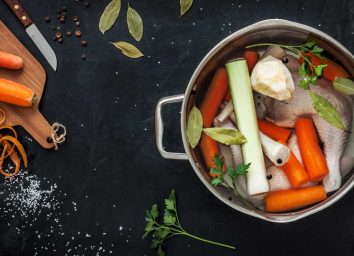This Diet Trick Makes You Live Longer

But there's a catch: you have to add fasting—intermittent fasting, to be exact—to your feasting in order to reap this particular health benefit.
People who practiced intermittent fasting for 10 weeks by having six days of "feasting" and one day of fasting showed an increase in a longevity-boosting gene called SIRT 3, according to a study published in the journal Rejuvenation Research. And, before you ask, no, the participants weren't following a particularly healthy diet. Both feast and fast diets included some of your favorites like bagels and cream cheese, Oreos and lemon pound cake.
Although this study itself notes that more research on intermittent fasting (IF) is needed, fasting has been linked to plenty of other health benefits, including slashing your risk of coronary artery disease and fighting inflammatory disorders like Alzheimer's, type 2 diabetes and atherosclerosis. Yet another study presented at the 2014 American Diabetes Association Scientific Sessions cites benefits for prediabetics. In this study, prediabetic men and women decreased their cholesterol by about 12 percent over a six-week period. An added bonus? They also lost weight.
How does it work? When the body undergoes periods of fasting, it produces a compound that inhibits an inflammation-triggering part of the immune system involved in the development of these scary disorders. And, by giving you the chance to eat what you want, it may help you tip the scale back in your favor, too.
Case in point: Fasting every other day leads to a 10+ pound weight loss after 10 weeks, according to a study out of the University of Illinois. And it may also be beneficial in more extreme cases; obese adults who tried this particular method of IF (and also added exercise into the mix) lost weight, fried fat and slashed bad cholesterol–while boosting good cholesterol–according to research published in the journal Obesity.
With this type of intermittent fasting, you get to feel normal and unrestricted every other day, says Krista Varady, PhD, an associate professor of nutrition at the University of Illinois and author of The Every Other Day Diet, who has studied the topic for about 10 years. Plus, perhaps surprisingly, people don't tend to binge on the "feast" days. "People all report feeling full more quickly, and are more able to control food intake," adds Varady. "We're not sure why this is, but we find that they just can't finish the massive meals they used to eat."
All that said, there are still a few things to consider before you hop on the IF train. First of all, if you're pregnant, have type 1 diabetes, or have a history of eating disorders, stay far away from this diet strategy. Plus, there may not be enough long-term research on intermittent fasting, stresses Gina Consalvo, MD, RD, LDN, a Pennsylvania-based registered dietitian, who generally doesn't recommend the technique. And it may be a major struggle if you tend to get extreme hunger cues or enjoy grazing on food throughout the day, she says. You may also experience headaches as your body adapts in the first few weeks of IF, though that's often because you're not drinking enough water, says Varady.
Still tempted to try IF? Start by consulting a dietitian to ensure you get a varied and nutritious diet on both fast and feast days, suggests Consalvo. Here, the plans that you can follow if you want to give it a shot.
Alternate Day Fasting (Varady's Method)
Alternate between fast day (in which you eat about 500 to 600 calories) and feast day (in which you eat your normal amount) from one day to the next.
Once-Per-Week Fasting
The method shown to boost longevity (mentioned above), this involves eating 25 percent of your regular caloric intake on a single day of fasting and 175 percent of regular caloric intake on the six days of feasting.
The 5:2 Diet
Eat around 500 to 600 calories for two non-consecutive days per week, and "feast" during the remaining days.
Complete Fasting
Go entire blocks of time—anywhere from 14 to 36 hours (depending on the method within this category)—without food.








